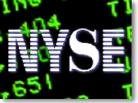|
NYSE mulls longer sessions
|
 |
February 24, 1999: 1:38 p.m. ET
Traders' reaction mixed on plan for three shifts, from 5 a.m. to midnight
|
NEW YORK (CNNfn) - With one eye overseas and the other looking to the future, the head of the New York Stock Exchange seems set to revolutionize the country's oldest stock market.
Richard Grasso, president of the Big Board, this week reiterated his plan to more than double trading hours at the exchange by June 2000. And though traders aren't exactly ready to stage a coup, their reaction has been mixed.
Under Grasso's proposal, the exchange would offer a three-session trading day, starting at 5 a.m. and finishing at midnight, Eastern Time.
"It will be a market that will have very little to do with Eastern Standard Time," Grasso said, speaking at the Information Technology for Wall Street conference sponsored by Ziff-Davis Inc. and Gartner Group Inc.
Grasso has said for several months he would like to open trading earlier in the morning, to allow more trading of European stocks, and close later for trading in Asian stocks.
The new trading hours come as the exchange looks to grab a bigger share of global trading and anticipates heavier international listings.
"Five years from now, it is reasonable to expect that perhaps as much as 30 to 35 percent of our volume will be from the great companies that are yet to arrive in our markets, companies from around the globe who will seek the deepest and broadest pool of liquidity the world has ever created," he said.
The proposal is also motivated by the rapid expansion of the securities industry, growth Grasso claims has been fueled by technology.
"Through technology, we have exported the floor of the NYSE to the consumer," Grasso said, pointing out that 91 percent of today's transactions are never touched by a human being.
Traders' reaction mixed
Grasso's remarks have drawn a mixed response from traders, whose lives could be dramatically altered by the proposed changes.
In previous statements, Grasso has said traders would work one of three shifts, with badges being time-specific, instead of being issued strictly to one person. In addition to the existing shift, the exchange could add a 5 a.m. ET to 9 a.m. ET time slot, targeted at European investors, and a 6 p.m. ET to 12 a.m. ET shift for investors in Asia.
Any change in trading hours would have to be approved by the exchange's board of directors and eventually by the Securities and Exchange Commission.
That could mean nontraditional work schedules for traders, some of whom who were surprisingly pragmatic about the proposed changes.
"What the NYSE wants to do makes sense," said James Volk, co-director of institutional trading at D.A. Davidson. "They've got to forget about our time zone. World markets are pretty much 24-hour markets."
"The NYSE is probably trying to respond to competitive threats and to global trends," added Ciaran O'Kelley, a technology trader for Salomon Smith Barney. "They're trying to make themselves more appealing to an international customer base."
O'Kelley denied traders would be unreceptive to new hours.
"I think people who are dedicated to our business would embrace that kind of change. New York is the center of international trade and people want to keep it that way," he said.
But Volk, who is based on the West Coast and regularly wakes up at 3 a.m. for work, said: "I'm not going to get up any earlier."
And Betsy Roselli, the head trader of Black & Co. in Portland, Ore., couldn't agree more.
"Do I want to have to get in any earlier that I already do? Right now I'm already here at 5:30," she said.
Besides potentially drastic schedule changes, the New York Stock Exchange has yet to address the slew of more serious questions regarding implementation that are certain to arise.
From the logistics of seating to keeping traders informed, "there are a lot of unanswered questions that need to be thought through," Roselli said.
Individual traders will have a much more difficult time keeping track of the market under the proposed changes, Roselli contends.
Traders already regularly track after-hours corporate news and overnight trends in global stocks before starting their day. Longer exchange hours will require they jump into a trading session that has already begun, forcing traders to digest more information in a shorter span of time.
Roselli believes larger East Coast firms will have an easier time adjusting than their smaller West Coast counterparts.
"It may be okay for people at Goldman Sachs and Smith Barney because they have people who can work those hours, but for those of us in different time zones, it will be much harder," she said. 
-- from wire reports with additional reporting by Nicole Jacoby
|
|
|
|
|
 |

|

